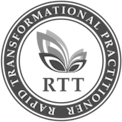“Each Enneagram construct shapes how we see the world and connect with it. Through core types, subtypes, instinctual drives, wings, lines of development and many more, these elements reveal unique strengths and challenges, offering a clear path to meaningful growth and purpose.”
Stef Becker (Sadashiva)




Enneagram Keys Assessments, Course Programs, and Coaching have been developed with certifications from:
Enneagram Attributions

About Mario Sikora's Contributions
The understanding of instinctual biases and their impact on personality presented here draws significantly from the innovative work of Mario Sikora. His reconceptualization of the instinctual subtypes, introducing the terms PRESERVING, NAVIGATING, and TRANSMITTING, has provided a clear, precise framework for understanding how our instinctual drives influence behavior.
Through his work at Awareness to Action International and his comprehensive book "Instinctual Leadership: Working with the 27 Subtypes of the Awareness to Action Enneagram," co-authored with María José Munita, Sikora has developed a practical, business-oriented approach to the Enneagram that emphasizes observable behavior rather than psychological speculation. His systematic research and real-world application of instinctual biases, particularly in organizational and leadership contexts, has brought new clarity to how these drives manifest in professional environments.
Sikora's contribution extends beyond terminology. His detailed analysis of instinctual sequences and their impact on attention, behavior, and interaction styles, as presented in "Instinctual Leadership," has provided valuable insights into how these patterns influence decision-making and leadership. The collaboration with Munita has further enriched this work through her extensive experience in Latin America and international business contexts.
While our presentations draw upon Sikora's innovative framework and terminology for understanding instinctual biases, we have developed our own interpretations and applications, integrating this knowledge with our unique understanding and experience.
We encourage exploration of Mario Sikora's original works through Awareness to Action International and his book "Instinctual Leadership," which provides a comprehensive guide to working with the 27 subtypes in professional development.
About Katherine Chernick Fauvre's Contributions
Katherine Chernick Fauvre's Tritype® concept presented on this website draws upon the broader Enneagram tradition, which explores the nine personality types and their interrelationships. The idea of considering an individual's dominant type within each of the three centers of intelligence (Head, Heart, and Gut) has roots in the work of various Enneagram teachers, including Claudio Naranjo's teachings on the instinctual subtypes.
The descriptions of the 27 specific TriCenters presented here is informed by the extensive research on the tritype® concept, done and popularized by Katherine Chernick Fauvre. While we prefer to use the term TriCenter, due to our own interpretation of predominant type within each intelligence center, we want to fully acknowledge the foundational work of Katherine Chernick Fauvre.
We encourage further exploration of the discussion surrounding the Tritype® concept and its development.
About Claudio Naranjo's Foundational Contributions
The psychological depth and clinical understanding of the Enneagram system presented here draws significantly from the groundbreaking work of psychiatrist Claudio Naranjo, MD. As the first person to systematically connect modern psychology with the Enneagram symbol, Naranjo's contribution forms the cornerstone of contemporary Enneagram understanding.
After learning the system from Oscar Ichazo in Chile, Naranjo developed and elaborated the psychological aspects of the nine personality types, particularly through his seminal work "Character and Neurosis: An Integrative View" (1994). His pioneering integration of psychiatric character structures with the Enneagram, and his detailed exploration of the 27 subtypes, has profoundly influenced how we understand personality patterns and their manifestations.
Many of today's prominent Enneagram teachers and authors, including Helen Palmer, Don Riso, and Beatrice Chestnut, were either directly taught by Naranjo or have been significantly influenced by his work. His understanding of the relationship between psychological defense mechanisms and Enneagram types continues to inform modern interpretations of the system.
While our presentations draw upon Naranjo's fundamental insights into the psychological aspects of the Enneagram, particularly his work on character structures and subtypes, we have developed our own interpretations and presentations, integrating this knowledge with contemporary psychological understanding.
We encourage exploration of Claudio Naranjo's original works, particularly "Character and Neurosis" and his other contributions to the field of personality studies.
About Helen Palmer's Contributions and the Enneagram's Open Usage
The ability to freely discuss and teach the Enneagram system today owes much to Helen Palmer's pivotal role in making this knowledge accessible to the public. As one of the earliest teachers of the Enneagram in the United States and author of the groundbreaking book "The Enneagram: Understanding Yourself and the Others in Your Life" (1988), Palmer's contribution extends far beyond her teachings.
In a landmark case during the early 1990s, Palmer successfully defended against the Arica Institute's attempt (unfortunately with the blessings of Oscar Ichazo) to claim exclusive rights to Enneagram teachings and its symbolic representation. Her victory in this legal battle established that the Enneagram system, including its nine-pointed star symbol and type descriptions, belongs to the public domain. This crucial legal precedent ensures that the Enneagram community can freely use, teach, and develop this system of understanding human personality and behavior.
Palmer's influence also extends to her pioneering work in developing the Narrative Tradition, a unique approach to teaching the Enneagram through panel interviews and self-discovery. As a founding director of the International Enneagram Association (IEA) that emerged from the first International Enneagram Conference at Stanford University in 1994, she has helped establish professional standards and ethical guidelines for Enneagram teaching.
While our interpretations and presentations of the Enneagram draw upon this open-source foundation that Palmer helped secure, we acknowledge her vital role in making this wisdom tradition accessible to all. We encourage exploration of Helen Palmer's original works and the Narrative Enneagram Tradition she developed in conjunction with David Daniels, MD.
About Beatrice Chestnut's Contributions
The subtype descriptions presented on this website draw upon the broader Enneagram tradition, which explores the nine personality types and their instinctual variations. The understanding of how instinctual drives influence personality type expression has roots in the work of various Enneagram teachers, including Claudio Naranjo's pioneering work on the instinctual subtypes.
The 27 specific subtype descriptions and their manifestations, as presented here, is informed by the extensive research and detailed descriptions developed by Beatrice Chestnut, PhD. Her work, particularly in "The Complete Enneagram: 27 Paths to Greater Self-Knowledge," has provided deep insights into how instinctual drives shape personality expression.
While the subtype descriptions presented here draw inspiration from Beatrice Chestnut's research and teachings, we have developed our own interpretations and presentations, integrating this knowledge with our unique understanding and experience.
We encourage further exploration of the discussion surrounding subtypes and their development through Beatrice Chestnut's original works and teachings.
About Riso-Hudson Enneagram Contributions
The Enneagram framework presented on this website draws upon the broader Enneagram tradition of personality studies. The comprehensive understanding of the nine personality types, their levels of development, and the dynamic nature of personality presented here has its foundations in the groundbreaking work of Don Richard Riso and Russ Hudson.
The concepts of Levels of Development, the detailed type descriptions, and the understanding of each type's growth and stress patterns are significantly influenced by Riso and Hudson's extensive research and systematic approach, particularly as presented in their seminal works "Personality Types" and "The Wisdom of the Enneagram." Their contribution in developing the Enneagram as a precise and scientifically-oriented psychological system has been fundamental to modern Enneagram studies.
While the Enneagram interpretations presented here draw inspiration from Riso and Hudson's profound research and teachings, particularly their work on personality development and integration, we have developed our own interpretations and presentations, integrating this knowledge with our unique understanding and experience.
We encourage further exploration of the Enneagram system through Riso and Hudson's original works and The Enneagram Institute®'s extensive teachings and resources.
About Sandra Maitri's Spiritual Dimension Contributions
The psychological depth and spiritual understanding of the Enneagram presented here draws significantly from Sandra Maitri's groundbreaking work. As one of Claudio Naranjo's original students in the SAT program during the early 1970s and a long-term teacher in the Diamond Approach®, Maitri has provided profound insights into the relationship between personality structure and essential qualities of Being.
Her seminal work "The Spiritual Dimension of the Enneagram: Nine Faces of the Soul" (2000) and "The Enneagram of Passions and Virtues" (2005) have brought unprecedented depth to understanding how each Enneagram type represents a particular relationship with and loss of specific essential qualities. Her work illuminates the connection between the nine types and their corresponding emotional patterns, passions, and virtues.
Through her teaching at the Diamond Approach® and her extensive writing, Maitri has made significant contributions to understanding the relationship between ego structures and spiritual qualities, the psychological mechanisms of each type's fixations, and the path from personality to essence for each type. Her detailed exploration of the passions and virtues has provided a sophisticated framework for understanding personality as it relates to spiritual development.
While our presentations draw upon Maitri's profound insights into the spiritual dimension of the Enneagram, particularly through her work connecting psychological patterns with essential qualities, we have developed our own interpretations and applications, integrating this knowledge with our unique understanding and experience.
We encourage exploration of Sandra Maitri's original works through her books and the Diamond Approach® teachings for a deeper understanding of the spiritual dimensions of the Enneagram.
About Dr. Khaled ElSherbini's Contributions
Dr. Khaled ElSherbini's unique ability to dramatize complex Enneagram constructs helps students not just understand but truly 'feel' these intricate concepts.
The understanding of Enneagram applications in consciousness studies and integral psychology presented here draws significantly from ElSherbini's innovative work. As the founder of Enneagram Egypt, the first and largest IEA-accredited Enneagram school in North Africa and the Middle East, his contribution has been instrumental in bringing structured Enneagram education to the region.
Through his work at The Consciousness Academy and his development of programs such as "Awaken through Enneagram," "Integral Enneagram," and "Conscious Coaching with the Integral Enneagram," ElSherbini has created a unique synthesis integrating the Enneagram with Spiral Dynamics, Integral consciousness studies, and transpersonal psychology.
We encourage exploration of ElSherbini's work through The Consciousness Academy and Enneagram Egypt's educational programs.
